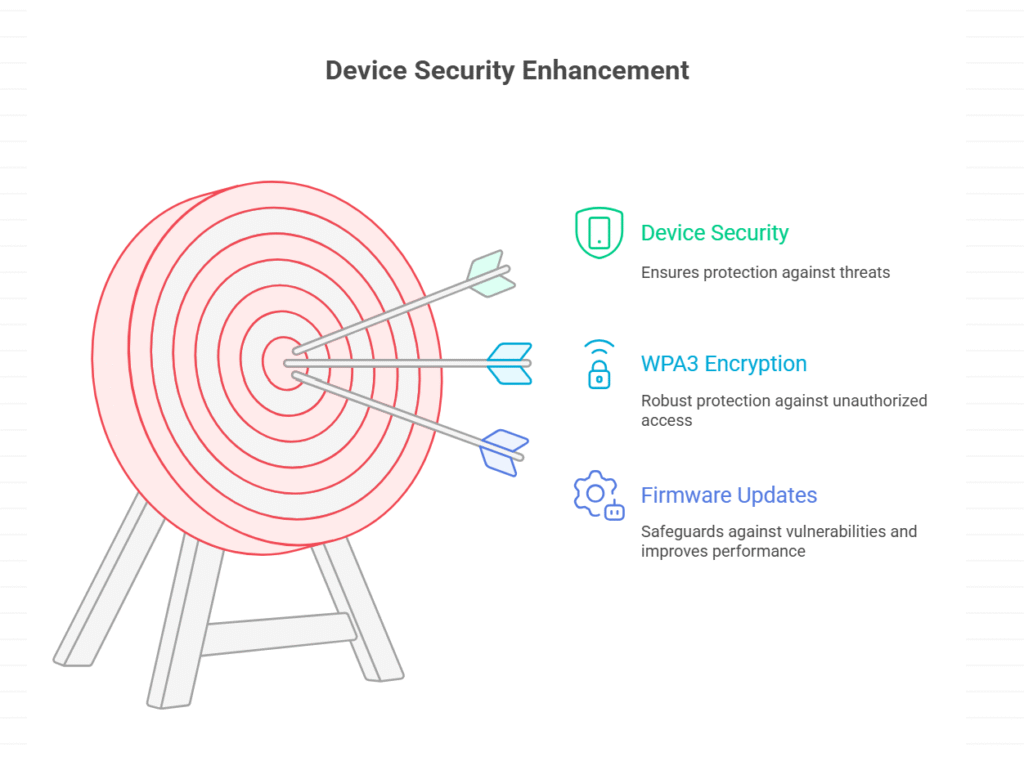Wireless IP isn’t just a fancy term for Wi-Fi; it’s the unique address (like a digital ID card) assigned to every device connected to a network. Think of it as your device’s home address in the vast internet neighborhood.
Here’s how it works:
- IP Assignment: Your router (the network boss) hands out IPs to devices via DHCP.
- Data Routing: These IPs ensure data packets reach the right device (your phone, laptop, or wireless IP camera).
- Wireless Transmission: Wi-Fi or cellular networks carry these packets wirelessly.
But here’s the million-dollar question: What happens when these wireless IPs get compromised? Hackers love exploiting weak networks to snoop on your data or hijack your devices. Scary, right?
The Evolution of Wireless IPs: From IPv4 to IPv6
Remember the good old days of IPv4? It used addresses like 192.168.1.1. Cute and simple, but woefully inadequate for today’s IoT-driven world. Why? IPv4 supports only 4.3 billion addresses. Yep, we outgrew it.
Enter IPv6, the superhero with 340 undecillion unique addresses (2001:0db8:85a3:0000:0000:8a2e:0370:7334). It’s like upgrading from a studio apartment to a skyscraper of connectivity.
Real-Life Example: A smart city project in Singapore migrated to IPv6 to connect 100,000+ wireless IP cameras and sensors. Result? Zero IP conflicts, 40% faster data routing, and a 90% drop in network downtime. The mayor quipped: “Our city is now smarter, safer, and seriously connected.”
How Wireless IPs Power Modern Tech Ecosystems
You might not realize it, but wireless IPs are the lifeblood of:
- Smart Homes: Your wireless IP camera for CCTV DVR streams footage to your phone via a unique IP.
- IoT Devices: Thermostats, lights, and fridges all chat using wireless IPs.
- Business Networks: Wireless IP phones replace clunky landlines for seamless VoIP calls.
- Autonomous Vehicles: Self-driving cars rely on stable, low-latency IPs to navigate.
But with great power comes great responsibility. Wireless intrusion attempts have skyrocketed by 300% in the last two years alone. Hackers love targeting weak IPs to:
- Snoop on private feeds (hello, hacked wireless IP cameras!)
- Hijack networks for illegal activities
- Launch DDoS attacks
The Fix: Secure your wireless IPs with:
- Strong passwords
- VPNs (Virtual Private Networks)
- Regular firmware updates
Wireless Intrusion: The Silent Threat No One Talks About
Ever heard of KRACK (Key Reinstallation Attack)? It’s a wireless IP exploit that broke the internet in 2017. Hackers intercepted data mid-transit, exposing millions of users. Ouch.
Common wireless intrusion methods:
- Man-in-the-Middle (MitM): Hackers sit between your device and router, sniffing IPs.
- Rogue Access Points: Fake Wi-Fi hotspots steal your IP credentials.
- Brute Force Attacks: Guessing your IP-based login (weak passwords = disaster).
The Stats:
- 70% of small businesses face wireless intrusion attempts monthly.
- 1 in 5 home networks is vulnerable to IP spoofing.
Don’t panic. We’ll cover rock-solid defenses later.
Types of Wireless IPs: Static vs. Dynamic
Not all IPs are created equal. Here’s the lowdown:
Static IP:
- Fixed address (e.g.,
10.0.0.1) for servers or wireless IP cameras. - Pros: Reliable, easy to access remotely.
- Cons: Exposes devices to targeted attacks.
Dynamic IP (DHCP):
- Changes each session (e.g., your phone’s home Wi-Fi vs. coffee shop Wi-Fi).
- Pros: Secure, flexible.
- Cons: Tricky for remote access (e.g., home security systems).
Pro Tip: Use Dynamic DNS (DDNS) services to map dynamic IPs to a static domain. Your wireless IP phone will thank you.
Wireless IP Cameras for CCTV DVR: Smarter Security in 2025
Gone are the days of blurry, wired CCTV systems. Wireless IP cameras now dominate home and business security. Here’s why:
- Easy Installation: No drilling walls; just stick and sync via Wi-Fi.
- Remote Monitoring: View feeds on your phone from Tokyo to Timbuktu.
- Cloud Storage: No more pesky DVRs; data lives safely online.
But wireless intrusion risks lurk:
- Weak passwords (default:
admin123) - Unencrypted streams
- Firmware vulnerabilities
Secure Your Feed:
- Change default IPs and passwords
- Enable WPA3 encryption
- Regularly update camera firmware
A user recently tweeted: “Thought my wireless IP camera was secure. Hacker accessed it and yelled ‘Good morning!’ at 3 AM. Never. Again.”

Wireless IP Phones: The Future of Business Communication
Landlines are extinct; wireless IP phones are the norm. VoIP (Voice over IP) technology lets you dial from anywhere with Wi-Fi.
Benefits:
- Cost-Effective: No phone bills; just internet charges.
- Feature-Rich: Call forwarding, voicemail-to-email, video conferencing.
- Portable: Take your business number to the beach (not recommended, but possible).
The Catch: Poor Wi-Fi = choppy calls. Secure your wireless IP phone network with:
- QoS (Quality of Service) settings prioritizing VoIP traffic
- Strong WPA2/WPA3 encryption
- Regular security audits
Setting Up and Securing Your Wireless IP Network
Ready to future-proof your network? Follow these steps:
- Upgrade to IPv6: Future-safe your network.
- Segment Devices: IoT on one subnet, sensitive data on another.
- Use Strong Encryption: WPA3 is non-negotiable.
- Monitor Traffic: Tools like Wireshark detect suspicious activity.
- Update Regularly: Router, cameras, phones—all firmware matters.
Proactive Tip: Conduct wireless intrusion tests (ethical hacking) annually. Hire pros if needed.
Frequently Asked Questions
Q1: What’s the difference between a wireless IP and a MAC address?
A: A wireless IP is your network address (like a home address), while a MAC address is your device’s hardware ID (like a birth certificate). IPs change; MACs stay forever (unless spoofed).
Q2: Can I use a static IP for my wireless IP camera?
A: Yes, but don’t expose it to the internet without VPN or firewall rules. Static IPs are attack magnets.
Q3: How do I detect wireless intrusion attempts?
A: Use network monitoring tools (e.g., Wireshark, GlassWire) to spot unusual IP activity. Logins from unknown locations? Red flag.
Q4: Are wireless IP phones secure for business calls?
A: Absolutely, if configured right. Use SIP encryption, strong passwords, and trusted VoIP providers. Avoid public Wi-Fi for VoIP.
The Future of Wireless IPs: What to Expect in 2025
- AI-Driven Networks: Self-healing IPs that detect and fix intrusion attempts.
- 5G Integration: Lightning-fast wireless IPs for AR, VR, and IoT.
- Zero Trust Architecture: “Never trust, always verify” for every device and IP.
- Quantum-Resistant Encryption: Because future hackers might use quantum computers.
The future isn’t just wireless; it’s smarter, faster, and safer.
Conclusion
Wireless IPs aren’t just tech jargon; they’re the invisible threads weaving our digital lives together. Whether you’re securing a wireless IP camera or optimizing wireless IP phone calls, the principles remain the same: understand, secure, and future-proof.
CLICK HERE FOR MORE BLOG POSTS
“In a world of instant takes and AI-generated noise, John Authers writes like a human. His words carry weight—not just from knowledge, but from care. Readers don’t come to him for headlines; they come for meaning. He doesn’t just explain what happened—he helps you understand why it matters. That’s what sets him apart.”

